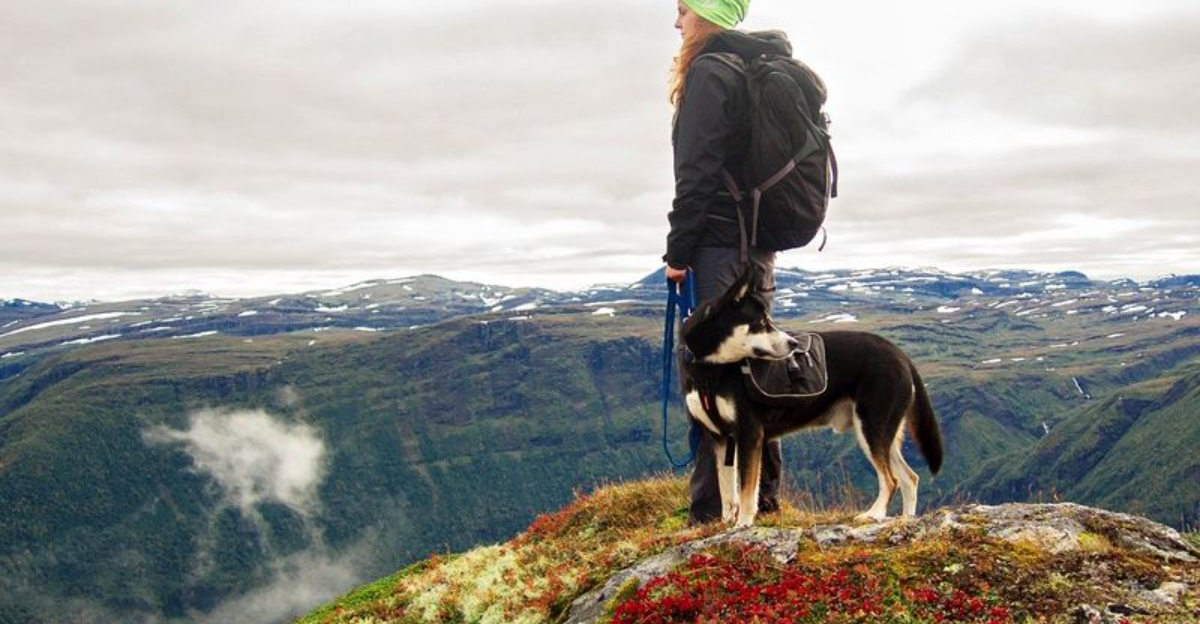Autumn in Colorado brings a spectacular transformation to the mountains, but it also creates unique challenges for our four-legged hiking buddies.
Last weekend, my dog and I hit the trails near Estes Park, and I noticed how differently he responded to the fall conditions compared to our summer adventures.
Understanding these seasonal effects can help keep your canine companion safe and happy during your outdoor explorations.
Cooler Temps Boost Stamina
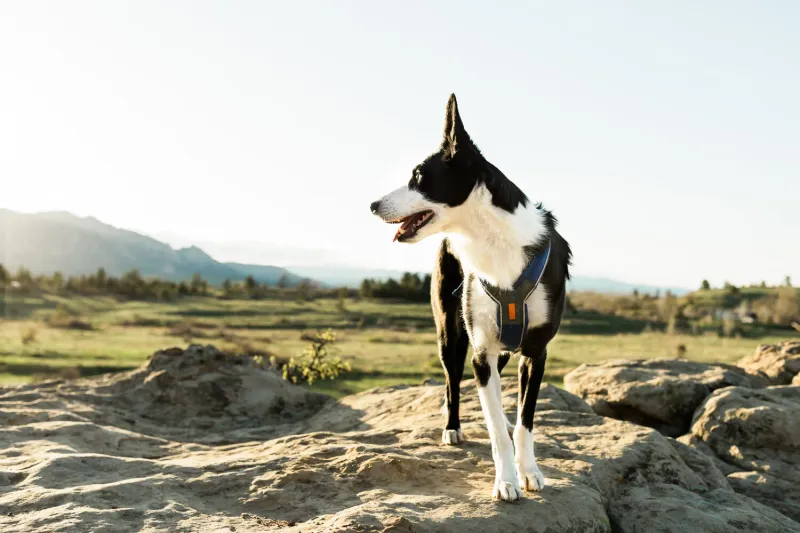
Nothing makes me happier than watching my pup practically dance down the trail when fall temperatures arrive!
After summer’s sweltering heat, the crisp autumn air gives most dogs a remarkable energy boost.
Many breeds, especially thick-coated mountain dogs like Huskies and Bernese Mountain Dogs, perform at their peak in cooler weather. Their natural cooling systems work more efficiently, allowing them to hike longer without overheating.
I’ve noticed that my dog Ranger can tackle an additional 2-3 miles in October compared to July. Just remember this newfound stamina might tempt you to push further than planned, so pack extra supplies for those spontaneous extended adventures.
Big Day–Night Temperature Swings
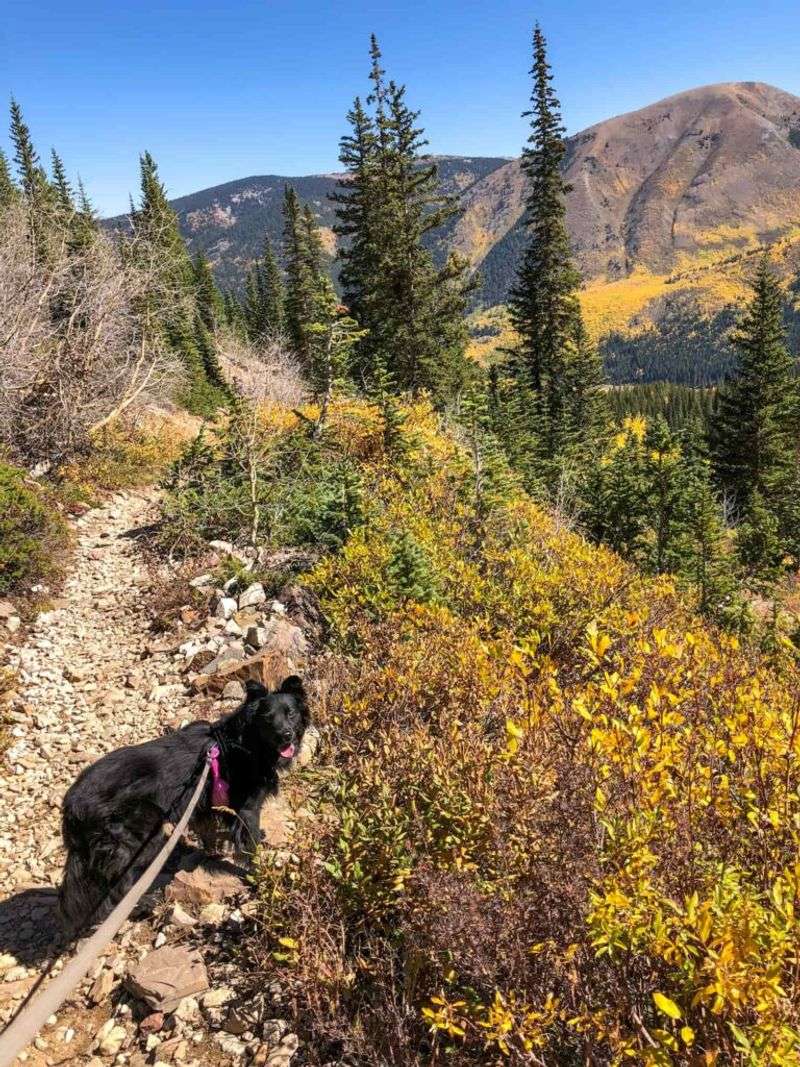
Mornings on Colorado trails can be downright frosty!
The temperature roller coaster between dawn and midday caught me off guard during our first fall hike years ago. Ranger was shivering at the trailhead but panting heavily by noon.
Mountain temperature swings often exceed 30 degrees in autumn. Starting early? Your pup might need a doggy jacket for the first mile or two. By midday, that same coat could become a heat hazard.
I’ve learned to pack layers for Ranger just like I do for myself. Quick-dry cooling vests work wonders for midday heat.
Sudden Weather Shifts In The Rockies
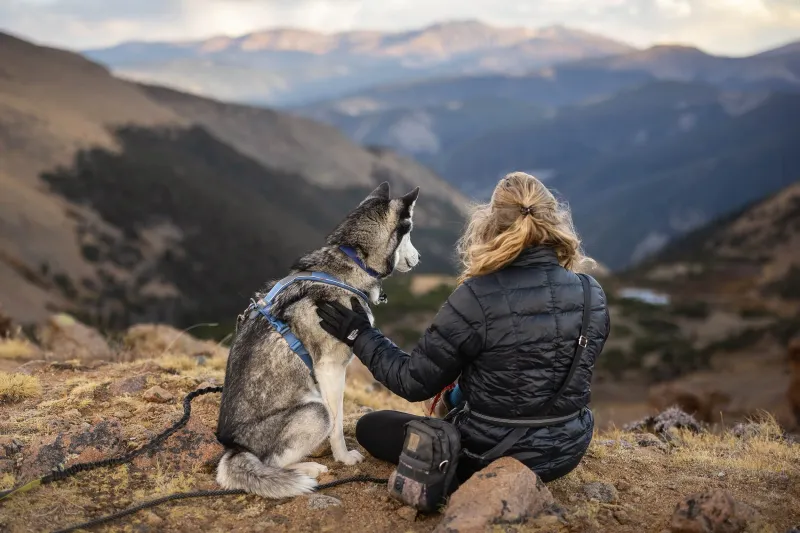
Fall in the Rockies brings notoriously unpredictable weather patterns. A perfectly clear morning can transform into sleet, snow, or thunderstorms without warning.
These rapid changes affect dogs differently than humans since they can’t simply add or remove layers.
Waterproof dog gear is non-negotiable in my pack from September onward.
I also check multiple weather sources before heading out and always have a bail-out plan if conditions deteriorate. Ranger’s safety depends on my preparation.
Higher Elevation Amplifies Cold And Wind Chill
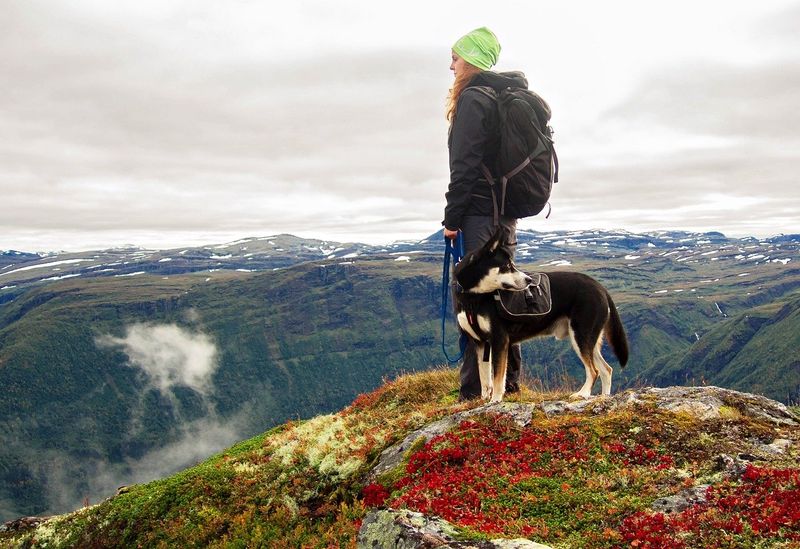
Ranger’s first high-altitude autumn hike taught me a valuable lesson about elevation effects. While the temperature at our Denver home was a comfortable 65°F, we hit bone-chilling winds above treeline that had him tucking his tail between his legs.
For every thousand feet of elevation gain in Colorado mountains, temperatures typically drop 3-5 degrees. Add in the wind chill factor, and your dog can experience temperatures 10-20 degrees colder than valley readings.
Short-haired breeds like Vizslas and Weimaraners particularly struggle with this amplified cold.
Dry Mountain Air Increases Dehydration
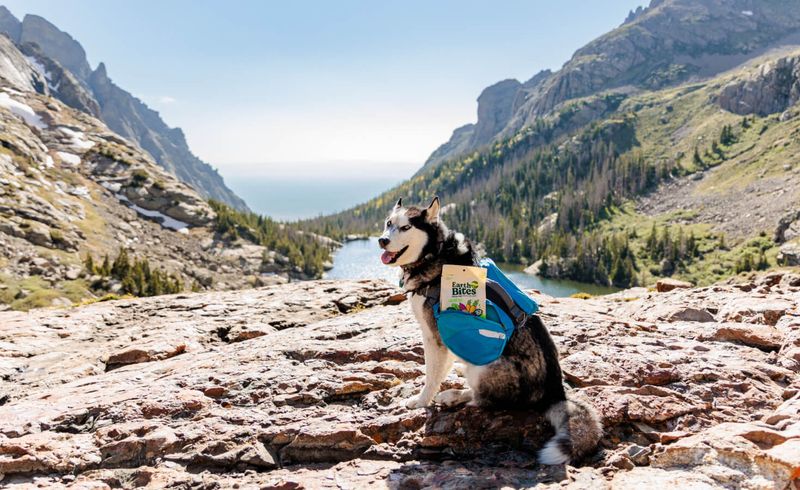
The combination of altitude, low humidity, and physical exertion creates perfect conditions for canine dehydration.
Dogs cool primarily through panting, which expels moisture with every breath. In Colorado’s arid climate, they lose water vapor at an accelerated rate.
I’ve adopted the habit of offering Ranger water every 20-30 minutes during our fall hikes, regardless of whether he seems thirsty.
His collapsible bowl and dedicated water reservoir are non-negotiable gear items, even for short excursions.
Paw Hazards From Frost, Ice, And Abrasive Rock
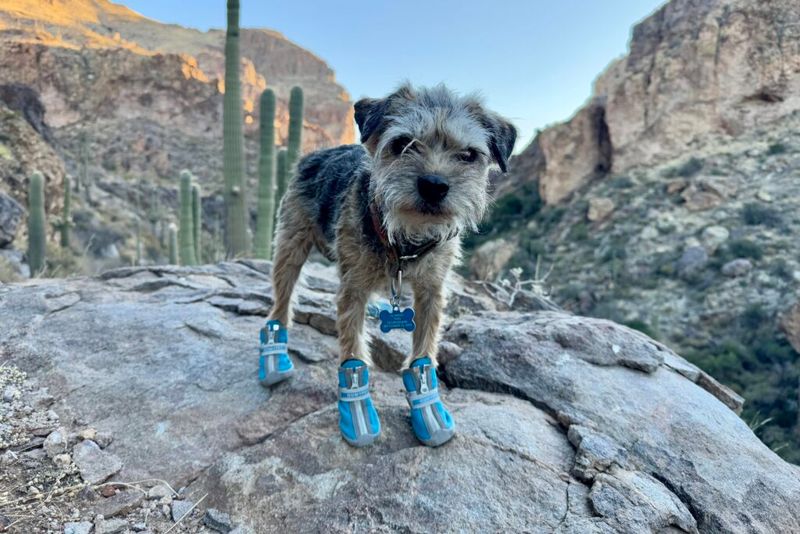
Those early morning trails can harbor hidden dangers for your pup’s sensitive paw pads. Overnight frost creates slick surfaces that can lead to cuts and scrapes when your dog scrambles over rocks.
Morning frost thaws into mud, then refreezes into sharp ice crystals by afternoon. These temperature cycles make terrain increasingly abrasive.
Many hikers notice their dogs suddenly stopping or licking their paws when discomfort strikes.
Consider protective booties for rocky sections, especially if your trail crosses talus fields.
Early Snow/Crust Increases Exertion
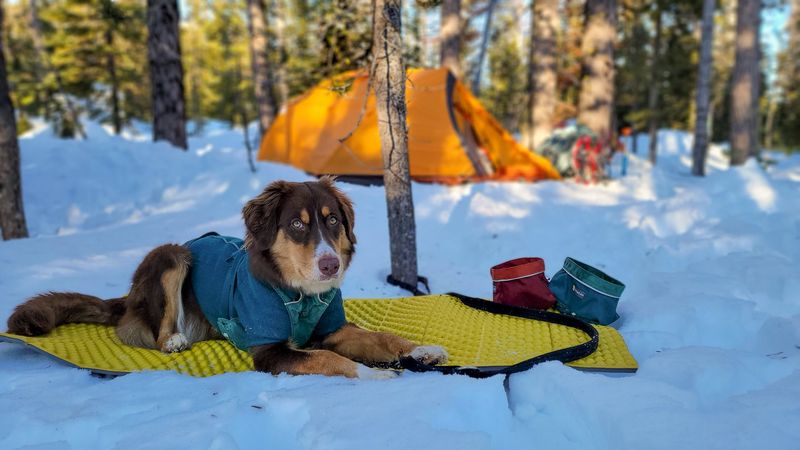
Fall snowfall in Colorado creates deceptively challenging conditions for your hiking buddy. Dogs sink through the light powder while trying to maintain pace, causing them to work twice as hard as they would on solid ground.
The thin crust that forms after partial melting becomes a particular problem.
Your pup breaks through with each step, while you might stay on top with snowshoes. Watch for signs of fatigue like lagging behind or excessive panting.
Plan shorter routes when early snow appears, especially above 10,000 feet where accumulation happens sooner.
Remember that what feels like an easy hike for you might be exhausting for your four-legged companion in these conditions.
Increased Calorie Burn In Cold/Altitude
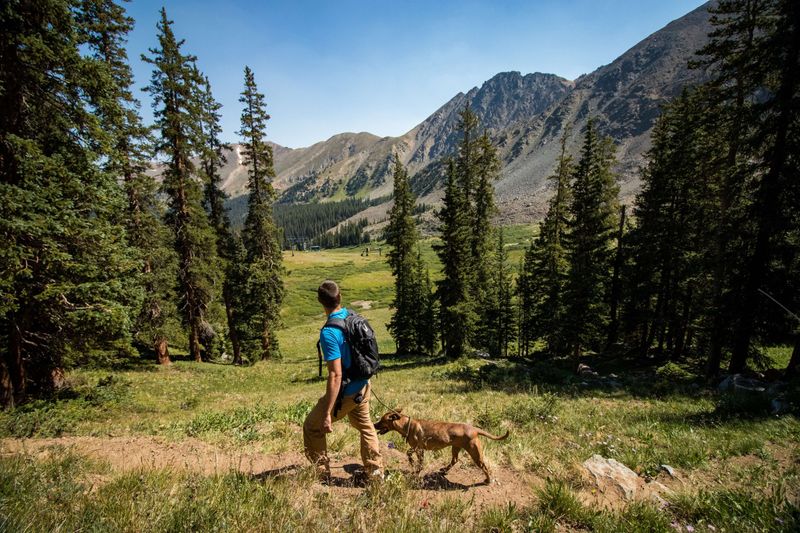
A medium-sized active dog might need 25-30% more calories on a fall mountain hike compared to summer outings at lower elevations. Signs of energy depletion include shivering, decreased enthusiasm, or unusual fatigue midway through familiar trails.
Pack extra high-quality treats like jerky or energy bars formulated for active dogs.
Consider serving a heartier breakfast before morning hikes, and always bring more food than you think necessary for unexpected weather changes or extended adventures.
Morning Chill Can Worsen Arthritis
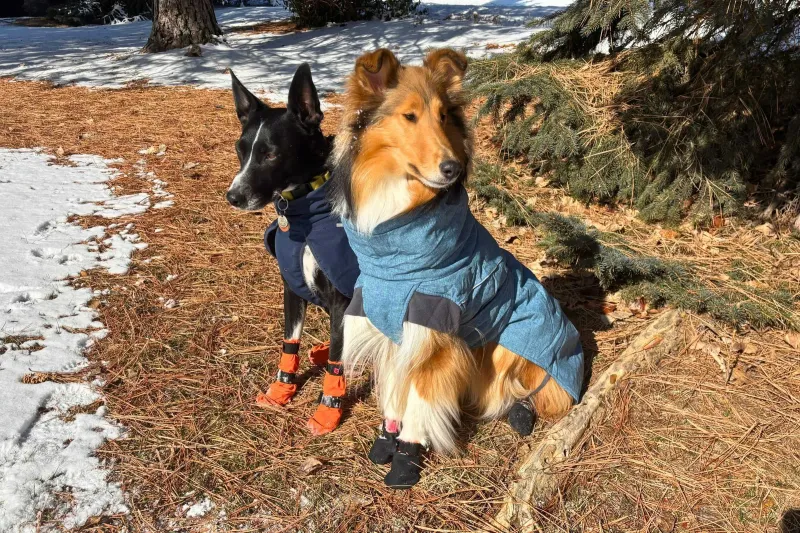
Frosty Colorado mornings hit senior dogs particularly hard when temperatures dip into the 30s. Older pups with joint issues experience stiffness that takes longer to work through as cold air settles in mountain valleys overnight.
Many owners notice their arthritic companions struggling during the first mile of morning hikes, only to loosen up as the day warms.
The contrast between overnight lows and daytime highs typical in fall creates a challenging adjustment period for aging joints.
Consider a doggy sweater for the first hour on trail and bring a padded mat for rest stops.
Seasonal Water Sources May Be Low/Iced
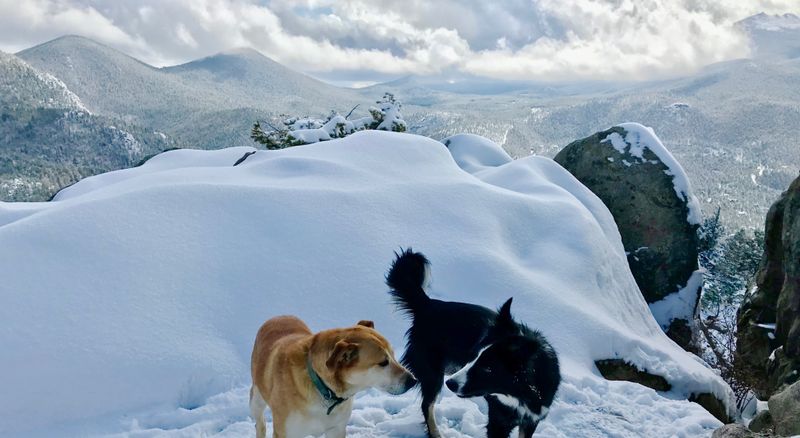
Fall’s fluctuating temperatures transform Colorado’s reliable summer water sources into unpredictable hazards for thirsty dogs. Streams that flowed abundantly in July often diminish to trickles by October, while morning ice makes remaining water temporarily inaccessible.
Dogs can’t regulate their hydration as efficiently in fall’s dry air. They may refuse drinking from partially frozen water or struggle to find accessible sources along familiar routes.
Dehydration happens surprisingly quickly, even in cooler weather.
Always carry dedicated dog water and a collapsible bowl rather than relying on natural sources.
